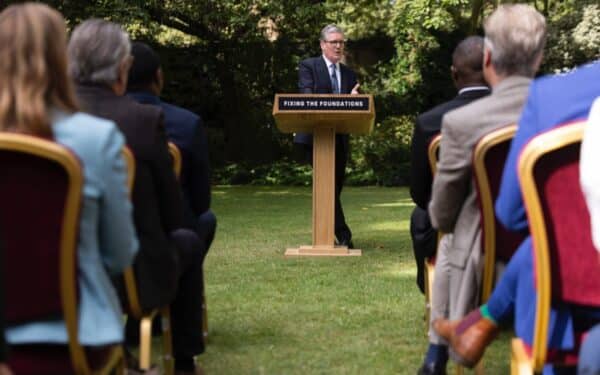The turn of the Millennium was a seminal moment of hope for Britain. After the doldrums of the 1970s, the UK firmly re-established itself as a leading global economy – no longer the sick man of Europe. How things have changed. The story of living standards since has been one of clear decline.
Since 2000, average wages have risen by 86% and prices have risen by 80%. But as new research from my Institute of Economic Affairs colleague Matthew Lesh highlights, this has been dwarfed by staggering increases in the price of essential goods. Electricity prices have risen 425%, house prices are up 254%, and the cost of childcare has increased by 193%. But the scale of these price rises has not been seen across the board. The cost of toys (-25%) and clothing (-29%) have fallen, as have the prices of technologies that would have been alien to our ancestors, like modern computers (-93%) and TVs (-90%).
The research shows a clear divide between the price trajectories of highly regulated sectors and those in competitive markets. In other words, red tape has disproportionately driven the cost-of-living crisis.
It has been well-established that the prospect of property ownership – or even affordable renting – has been closed off to a generation of young people by the UK’s absurdly burdensome planning laws. The IEA published a paper back in 1988 outlining how the UK’s post-war planning system restricts development and pushes up house prices by empowering and incentivising opponents of local house building. The only thing that has changed since 1988 is that things have gotten much worse. The population has grown and red tape on house building has increased, but the planning system has stymied attempts to increase supply.
It is more difficult to pinpoint one significant intervention that has driven up costs. Instead, the energy market perfectly showcases the damage of ratcheting intervention over time. Of course, Covid-era supply chain disruption and the Russian invasion of Ukraine caused energy costs to spike. But prices had already risen significantly, more than 30% between 2010 and 2020 (9% in real terms).
The primary cause of this ratcheting effect is decarbonisation regulations, especially since the Climate Change Act 2008. This imposed a clear threshold for carbon reduction in the UK, which was at odds with the liberalised energy markets that delivered a 26% price decrease between 1990 and 1999. Ever since, successive governments have been picking winners and losers by imposing heavy taxes and regulations on fossil fuels while subsidising questionable renewable technology, and doing little to expand nuclear or onshore wind capacity.
The story is similar in childcare, where regulations mandating a comparatively high number of staff for each child and prescriptive requirements in formal care settings and those effectively banning most informal childcare arrangements have caused supply to fall and costs to rise.
Supply restrictions caused by government regulations are central to these astronomical price rises, but subsidies are another side to this tragic story. When government regulations artificially restrict the supply of a good or service, there is huge political pressure on the government to relieve the burden of subsequent high prices. The government’s approach has been frustratingly consistent regarding childcare, energy, and housing. Rather than liberalise the markets to solve the problem that government regulations caused, they merely subsidise the demand side.
On housing, this comes in the form of policies like Help-to-Buy or the 99% mortgage guarantee that the Chancellor is reportedly considering. On childcare, the government’s policy of guaranteeing 30 hours of free childcare per week for parents earning under £100,000 is another example. The government has maximised this approach to energy with measures like the Energy Price Guarantee (whilst imposing a huge windfall tax on energy suppliers).
Measures like these only stimulate demand without tackling the core issue, a lack of supply. In the long term, they cause more money to chase after the same amount of goods, which necessarily means higher prices.
For the most part, the decline in living standards over recent decades is the creation of government red tape. To solve it, policymakers must make difficult decisions and allow markets to work.
Harrison Griffiths is Communications Officer at the Institute of Economic Affairs.
Write to us with your comments to be considered for publication at letters@reaction.life




